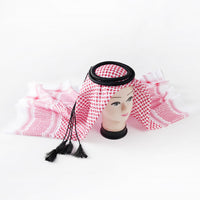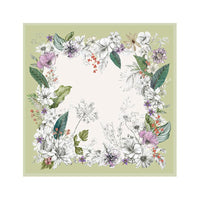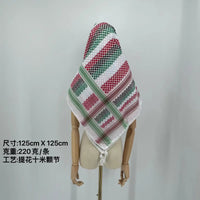Henri Matisse (December 31, 1869 - November 3, 1954, Capricorn) was a French painter, the greatest color painter of the 20th century, the founder and main representative of Fauvism. He and Picasso are the two most important painters of the 20th century and the leading figures of Fauvism. The use of bold and flat colors and free lines is Matisse's style. His playful structure, bright colors and relaxed themes are the characteristics that have made him famous.
Matisse was the founder of Fauvism. Born into a merchant family in the northern French town of Lecado, he studied law at the university and then painting. In 1892, he studied in Moreau's studio at the Academy of Fine Arts, and in five years of study, he established friendship with Ruault and Deran. In 1905, he and his friends created a number of works in the autumn salon, which shocked the audience and became famous. Soon Matisse went to Italy, Spain and Russia to travel and sketch. He became very interested in the exotic folk art, and his painting style became clear and simple. The 1920s was the mature period of his creation, creating a number of important paintings and sculptures such as "Joy of Life", "Red Harmony", "Dance", "Reclining Body", which fully reflected the characteristics of the Fauvism style. Matisse held major exhibitions in the United States in the 1930s and later turned to book illustration, stage design, costume design and murals. He began to cut paper in the 1940s, creating paper-cut illustrations such as Jazz. In the 1950s, he made a famous interior decoration for Vence Chapel, and his important paintings include "Woman in a Hat", "Open Window", "Girl playing guitar", "Girl in Blue" and so on.
1."The Open Window"

This painting, The Open Window, was one of Matisse's major works exhibited at the Salon de l 'Automne in 1905. The wall takes up only a small part of the picture, and the window takes up a large part. The Windows were wide open to the outside world -- flowerpots on the balcony, and vines, and then the sea and the sky and the ships. The interior walls and casement Windows are made up of broad vertical strips in vivid greens, blues, purples and oranges; the outdoor world is an ornate pattern of bright little brushstrokes. The strokes spread from small dots of green to wider shades of pale red, white, and the blue of the sea and sky. In this painting, Matisse has gone far beyond anyone among the New Impressionists, and subtle signs of color abstraction appear.
2."The woman in the hat"

This is a portrait of Matisse, and it has made such a radical departure from form that it has caused a stronger sensation than "the open window." Paint was spread indiscriminately over the picture, not only the background and the hat, but also the woman's face, her features, sketched out by the wheel with bold green and vermilion strokes.
3."Piano lessons"

Created in 1916, during the most brutal days of the First World War, this "Piano Lesson" is Matisse's blemest work, his most eager for rigor, his closest approach to Cubism. After this period, he still turned away from Cubism and returned to his happy bright colors. We can see that the painting is very structural: the garden outside the window is represented by a simple green geometry, all colors are cold and dark except for the red in the foreground of the piano, and the child playing the piano casts a geometric light shadow on the right side of his face, corresponding to the metronome geometry in front of him. The whole picture only has the window railing and the decorations on the piano stand, which are relaxed lines. Therefore, the picture is full of melancholy, reflecting the mood of depression and the shadow of war.
4."Dance"

"Dance" was created in 1909-1910, when Matisse took the model to the shore of the Mediterranean Sea, he believed that this work was closely connected with the joy of the Mediterranean Sea to him, the blue background of the painting, which means the blue sky of the south in midsummer and August, a large green reminds people of green green, the vermilion color of the figure symbolizes the healthy brown body of the Mediterranean people. In this wild and wild scene, the dancers seem to be controlled by some rough and primitive powerful rhythm, they hold hands in a circle, writhing their bodies, limbs moving wildly.
5."Girl in blue"

In the painting Girl in Blue, the painter omitted and summarized the details of the object and background, and the object and space were treated as flat color blocks. The blue dress of the girl was in sharp contrast with the background and the red and black of the chair. The white edge of the blue dress divided the whole picture, and the smooth curve on the white edge made the picture active from top to bottom. The artist did not make any in-depth depiction of the girl's face, and the concise outline was very coordinated with the whole modeling style, and also helped to strengthen the color impact and expression of the whole picture, which can also be confirmed in the works of other fauvism painters.
6"Still life on the red time blue dining table"

The series of oil paintings "Red Time, Still Life on the Blue Table" is one of the favorite oil painting themes created by the fauvism painter Matisse in his later years, the painter Matisse has completely lost sight of his remaining perspective. The bright red on the walls even spills out of the Windows, and there is no difference between indoor and outdoor. In the light rhythm played by the black zigzag shape, all color harmony is realized on this flat canvas.
7."self-portrait"

Using Matisse's paintings as inspiration to create a scarf is a very fun and creative project!
1.Colorful geometric scarf:
Choose a colorful, geometric part of Matisse's work as inspiration for the design.
Vivid color blocks and line elements are transformed into patterns on scarves to reflect Matisse's unique style.
2.Abstract Art style scarf:
Based on the lines and shapes of Matisse's abstract art works, the scarf is designed to be full of movement and abstract beauty.
Soft colors and smooth lines can be used to express the visual effects in the painting.
3.Scarves with floral and natural elements:
If Matisse's work contains floral or natural elements, you can use these elements as the theme of the scarf.
Using Matisse's unique color combinations and forms, the scarf is designed to be full of vitality and art.
4.Limited edition scarves with specific themes:
Select a Matisse painting with a specific theme or historical context and translate its elements and story into a scarf design.
This scarf can be a valuable item for art collectors and enthusiasts.
No matter what kind of creative idea is chosen, the key is to fully express the artistic essence and personality characteristics of Matisse's works. Through good design and exquisite production, you can create a unique and artistic Matisse style scarf.






